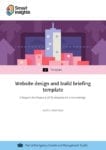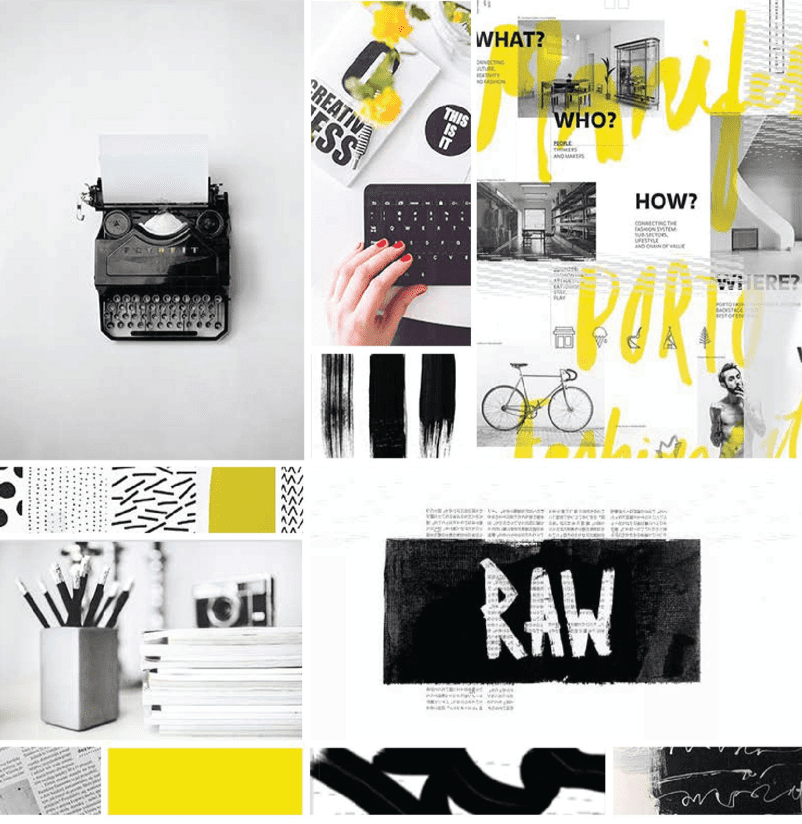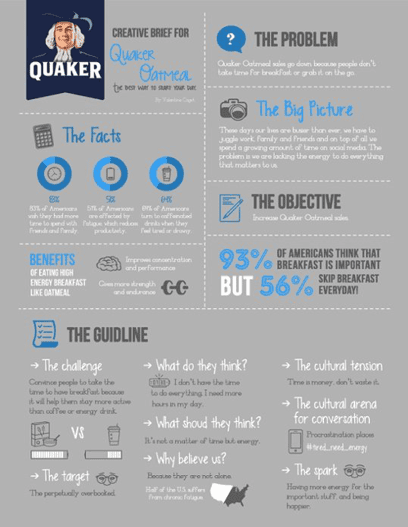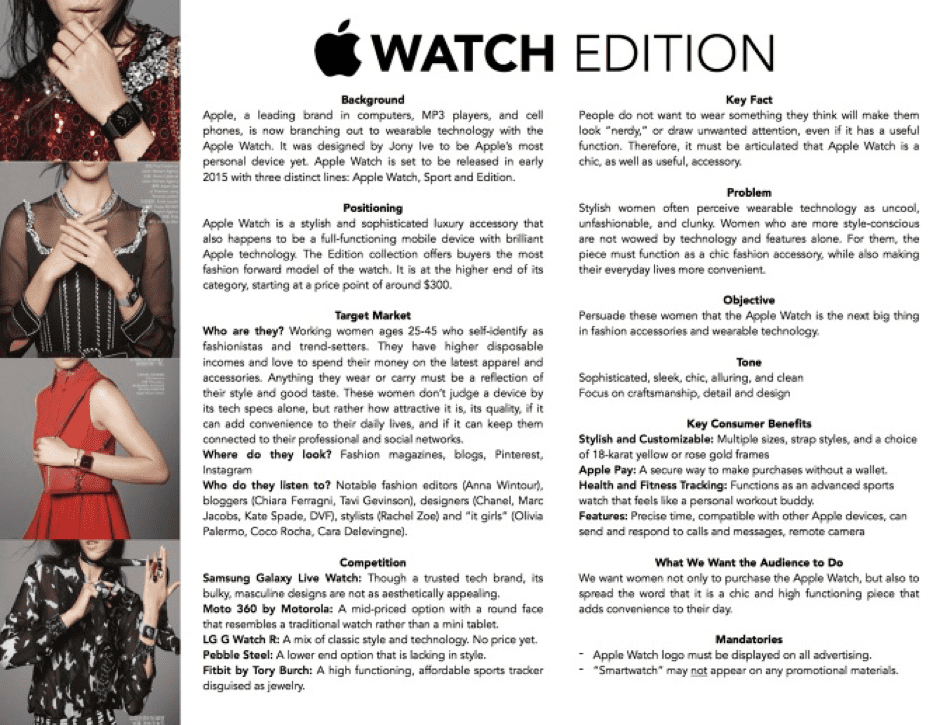How to write briefs that deliver great design work
In an increasingly crowded world, design work is key for businesses as they fight for mental availability through distinctiveness and clear branding. As businesses put design at the heart of their processes, there is a growing need to deliver great design briefs that work. In over fifteen years of writing design briefs, great ones, average ones, and bad ones, I can unilaterally state that if a design brief is rubbish, packed full of non-essential information, with gaps in critical parts and devoid of emotional hooks, even the best designers are going to struggle to do great work.
Download our Business Resource – Website design and build briefing template
We’ve created this template to help client-side digital marketing and e-commerce managers brief a website design and build project to either an in-house team or to a digital/web design partner.
Access the Website design and build briefing template
No one starts to do a bad job but the process is time-consuming and requires a lot of thinking. It raises difficult strategic choices, which teams find uncomfortable to make. All too often the process is basic and just ticks the same boxes, which inevitably leads to less than inspiring work coming back.
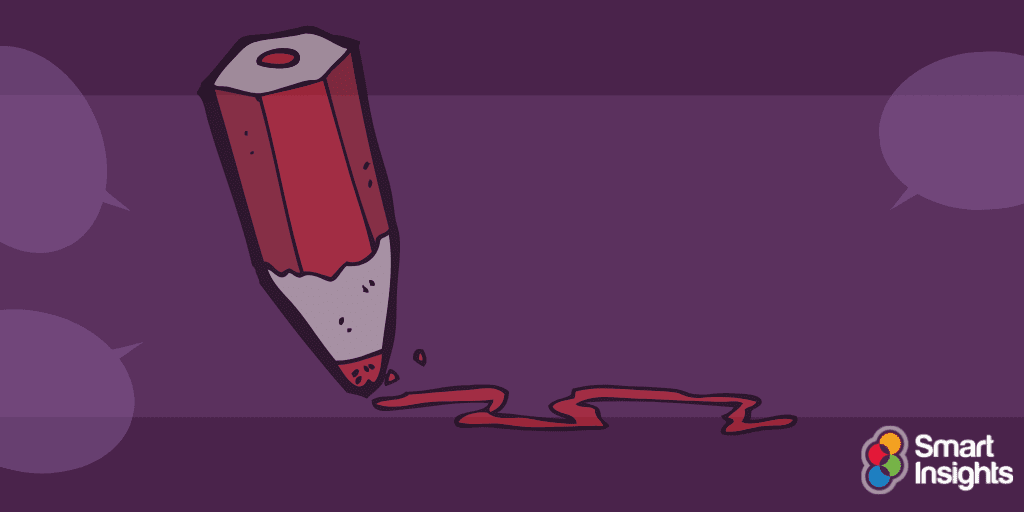
A great brief condenses key information, insights, and customer understandings into an inspiring brief. Talk articulately, knowledgeably, and passionately about your business, brand, and target customers. Bring to life the challenges your products and services are facing, or the opportunity you have identified in the market. Do that and you can inspire your designers to do some outstanding work. So how do you create a brilliant design brief that does just that?
Getting clear on objectives
Before looking at the contents and structure of a brief, it’s useful to understand the objectives. There are two when it comes to design briefs. The design work has an objective, which we’ll come to later, but the brief itself also has a very specific objective, one which is often forgotten.
The key objective of a design brief is to fuel the creativity of the designer who will use it to deliver great work.
They need to be inspired to find solutions to the challenge you have. Marketers and designers are often kept apart by account management teams. It’s not surprising that this point gets lost as the brief gets 'translated' from marketing-speak into designer-speak, via the accounts team, who’ve got their own 'speak' too. I’m pretty sure this is how Chinese whispers works and we all know how well that turns out. Keeping this objective in mind should minimize how much is lost in translation during the design process.
Delivering the brief
Ideally, the briefing will happen face-to-face. That way you can iron out any confusion, discuss any challenges, and answer any outstanding questions. However, you’ll still need to get the brief down on paper, even if you brief face to face. The agency or designer needs it to be able to price up the job and allocate resources, and they’ll use it as a guide to work to once they start. You need it to formulate your thinking, align your internal stakeholders, if you have any, and evaluate the work when it comes back.
Design brief building blocks
There are hundreds of templates available for writing design briefs. They vary massively in style and language but they mostly use a core set of building blocks. They can be broken down into:
- Background
- Objectives
- The challenge
- Design inspiration
- Mandatories
- Deliverables
- Timings
- Budget
- Team
You need to make sure it’s all in there but the quality of a brief is less about the structure and more about the thinking that goes into each section.
Background information
To fuel and guide the designers’ thinking, some background information is invaluable.
Company - This is useful as it provides context to the brief. If this is the first time you’ve worked with a designer it’s worth making sure they understand the business and it’s overall aims and strategies so that they can understand how their work fits into the bigger picture.
Market – The design work will likely be answering a challenge or opportunity in the market, so share the topline market information, successful new product launches, and any emerging trends or new entrants. Identify key competitors. Outline their performance and any share any significant successes and failures.
Brand – Introduce your brand. Tell your brand’s story.
- Who are you?
- What makes you unique?
- What is your brand essence?
- What makes you successful?
- What are your key brand truths and insights?
- What are your challenges (e.g. health/environment/value perceptions)?
- How do your core customers/heavy users feel about you (evangelical or guilty pleasure)?
- Where are you sold (shops/online/both)? If sold in stores, who do you sit next to on the shelf? Where do you sit on the shelf?
- In what kind of environments (own website/marketplaces/drugstores/department stores)?
- Is most of your online traffic viewing on mobile?
- How are you priced?
- Do you do offers?
- Who do your customers buy when you’re not available?
You won’t need to answer all these questions, just those relevant to the brief. One element that often gets left out for product packaging is the in-store environment. It leads to great 2D design work that doesn’t work in the end environment. Don’t skip sharing information on the location the design has to ultimately work in.
Project objective
State the objective of the design work as concisely and specifically as possible. It may contribute on many levels to broader marketing objectives but getting one clear objective for the brief is powerful. Objectives tend to be about change, so make the language dynamic. Is it about changing perception, or behavior, from X to Y? Is it to attract a new target consumer? Be realistic about the potential outcomes of design work. Increasing sales or market share are the jobs of the whole marketing plan, not design work.
Target audience
Bring to life the target audience for the designers. Use visuals if that helps. What should the customer think, feel, and perhaps do as a result of the design work? Share key insights about their lives, their habits, and perceptions of the brand today. What role does the category play in their lives? What are their unmet needs or conflicts for them with the category of products?
The design challenge
This part is where most discussions will be had before and during the briefing, and where the most energy will go once the work has started. You will have talked about some of the broader challenges for the brand and target customer already but this is the single challenge the design work will answer this challenge, so it should be clear and compelling.
Think about getting the conflict and emotion of the challenge into the statement. The mental imagery you create with the language you use is important. It might be the articulation of a negative customer perception or an exciting opportunity to take the market by storm.
Design inspiration
Sharing visuals to bring the brand and design challenge to life is also useful to give the designer a feel for the style, tonality, and visual handwriting you are trying to capture. Provide images of things that will be present alongside the new design work, existing visuals, or campaigns. Share images or colors you like, or you think might work for the project. Show images of taking an idea too far to give some boundaries.
Don’t try to crack the problem, you’re paying the professionals for that but if you have an idea of which direction you’d like it to go in, it’s much better to share it upfront. Be prepared for the designers to challenge it if they think another direction would be stronger in meeting your brief.
Mandatories
Share anything that is a must. If there are brand or logo guidelines, with fonts and color palette to use, that needs to be shared and noted here. If the brief involves packaging be clear up front how many colors you are going to have available for the final print. There is nothing worse than painstakingly creating a design to have it ruined because it can’t be realized within the print parameters.
Deliverables
You must outline exactly what you expect the design/agency to deliver. Is the brief for 2D work or also 3D. How many initial concepts do you want to see? How many finished design iterations will there be? Do you want design files or print-ready artworks on handover? If you’re doing a rebrand do you need new visual brand guidelines developing?
Timings
Break down the key dates for the project and be realistic about internal sign off time required. You’ll need to agree on the full-timing plan with the agency/designer but providing launch deadlines and dates of any critical points for the design work will help with resource planning and budgeting.
Budget
Good design work costs money. A full brand redesign is going to need a significant budget, versus a design extension or adaptation. To come to a suitable budget consider: the brief; deliverables; timings; and the impact on your brand of the design work.
Project team
It’s worth providing names and contact details of the project team and any senior stakeholders who are sponsoring the project.

A brief note on format
What format you make your brief is really up to you and your brand style. Some briefs look very corporate and those that look more like pieces of design work themselves. I’ve included Apple and Quaker examples below to show an example of both styles, however, you can also turn it into a presentation or write it up in Word. Again, it’s about the content, discussions, and thinking that the brief fuels, rather than the way it looks.
Once the brief is ready, get it fully aligned with any internal stakeholders to avoid changes as the work comes back. Then you are finally ready to brief your design project.
I hope this post has helped challenge your thinking about what makes a great design brief and given you a few ideas to increase the effectiveness of your design briefs going forward. Designers, this is my way of saying sorry for the briefs I wish my name wasn’t on, and thank you for your amazing work on the ones I’m proud to have written. Brands, good luck!



